What type of hose to get to hook up water/ice in door fridge?
Hello -
The plumber will be here soon and I want to get the right parts for him to bring water to the fridge via the basement.
Can someone recommend what type of setup I should get for health reasons (and durability)? What type of hose/line comes up from the basement (recommendations?) and what type should be used in the fridge?
Thanks!
p.s. the fridge we got is the Samsung 23-cu. ft. CD FD. Didn't come w/ anything like that cause it was extra and I wanted to look into it first.
Comments (28)
creek_side
13 years agolast modified: 9 years agoIt sounds like you need a water line run to your refrigerator location. That is more than just a hose. The line will most likely either be copper or pex, if that's how your house is plumbed. A shutoff valve needs to be installed in the wall or just above the floor at the refrigerator location.
The plumber will know how to do it. Normally, the plumber will supply all the materials.
For the line from the new shutoff valve to the fridge, you can use either copper or plastic. I prefer copper.
creek_side
13 years agolast modified: 9 years agoIt sounds like you need a water line run to your refrigerator location. That is more than just a hose. The line will most likely either be copper or pex, if that's how your house is plumbed. A shutoff valve needs to be installed in the wall or just above the floor at the refrigerator location.
The plumber will know how to do it. Normally, the plumber will supply all the materials.
For the line from the new shutoff valve to the fridge, you can use either copper or plastic. I prefer copper.
Related Professionals
Agoura Hills Kitchen & Bathroom Designers · Arcadia Kitchen & Bathroom Designers · Gainesville Kitchen & Bathroom Designers · Knoxville Kitchen & Bathroom Designers · Ojus Kitchen & Bathroom Designers · Grain Valley Kitchen & Bathroom Remodelers · Forest Hill Kitchen & Bathroom Remodelers · North Arlington Kitchen & Bathroom Remodelers · Santa Fe Kitchen & Bathroom Remodelers · Winchester Kitchen & Bathroom Remodelers · Kaneohe Cabinets & Cabinetry · Kentwood Cabinets & Cabinetry · Lackawanna Cabinets & Cabinetry · Newcastle Cabinets & Cabinetry · Saugus Cabinets & Cabinetryamcook
13 years agolast modified: 9 years agoIf the plumber is asking you to get the materials then find a new plumber. I'm surprised you have to come from the basement. Typically a soft copper from the kitchen supply is used. Avoid vampire taps at all cost. They will leak over time guaranteed. I installed my own and it took about 45 minutes total. Hardest part is taking off the old valve and sweating a new T valve on. Drilling holes in the back of the cabinets and running the soft copper is simple.
creek_side
13 years agolast modified: 9 years agoLOL. I hope Theresse knows what a vampire tap is. It took me a couple of seconds, and I have installed one a time or two.
But I do agree, they're not the best way to go.
It may or may not be easiest to come up from the basement. Without seeing the house, it's hard to say. Personally, I don't care for copper snaking through the back of the cabinets, but to each his own.
amcook
13 years agolast modified: 9 years agoI was lucky that the set of cabinets between my sink and fridge were all drawers. There is about 2 inches of clearance between the back of the drawers and the back of the cabinet. I just went along that back wall so there is no risk of damage or contact. You are correct of course that coming from the basement might be easier but for an ice maker, that seems overkill. I don't believe you can use soft copper between floors so that means 1/2 inch hard copper pipes which is a bit much for a fridge. I might well be wrong about that and 1/4 inch soft will be ok between floors. Just make sure the plumber isn't over spec'ing things because he/she needs the work.
theresse
Original Author13 years agolast modified: 9 years agoThanks so much everyone. Our sink and counter is on one wall and the fridge is on the opposite wall, about 12.5' away. Sounds to me like it would have to be run from the basement, which is unfinished.
I'd read about what's best to use, here (on this forum) in the past but just couldn't remember. I'm assuming it came down to copper vs. plastic and yes I want whichever is better quality and/or won't effect the taste so I assume that's copper. In that [lost] thread someone mentioned something else to look out for...darn it I wish I could find the old thread. It might have been warning not to get a line/pipe that's too narrow? I might have read that someone's water took too long to fill a glass and someone else wrote that it may have been the line (hose, whatever) was too narrow (?). There might also have been something about length (don't do it too short or have too much excess?) but I just can't remember.
Any other details you guys can think of would be much appreciated! So far what you've shared has helped a lot.
Amcook - I wouldn't know if my plumber were over spec'ing (not sure what that means?!)...I'm pretty ignorant when it comes to plumbing.
I don't think I need to supply the pipes of course but I was wondering if I needed a particular kind of line to the fridge (from the valve I guess - which I wasn't aware was needed) - e.g. something specific to the type of fridge? I know the one recommended by Lowe's was about $15.00 and they usually give it to you when they deliver your fridge but that's why I wrote here - cause before spending $15 for something Lowe's recommends, I wanted to make sure I shouldn't be spending more for something of better quality overall (including prevention of leaks or slow flow, etc.).
Anyway, thanks again, very much!
creek_side
13 years agolast modified: 9 years agoThey make copper and plastic water line kits for fridges.
Copper is the safest and a bit more expensive. It is coiled behind the fridge. The coil stretches, a bit like a spring, when you have to move the fridge out for some reason. If the line is too short, you have a problem.
Plastic lines are perfectly fine, if they are made properly. The trouble is imported junk that isn't made properly. The line can break, flooding your kitchen. Junk plastic lines can also impart a taste to the drinking water.
Unfortunately, there is no way for a consumer to look at the plastic line and tell if it is the proper stuff or not. Go with the copper.
davidro1
13 years agolast modified: 9 years agoI've seen sheathed lines. They are flexible. That seems good to me. Perhaps the plumbing forum people can say more.
I know firsthand that plastic lines can be sliced by anything that presses into them. It can cause the line to leak a little - which then puts water into the walls or floors, without looking like a flood, and makes mold grow and rot happen.
theresse
Original Author13 years agolast modified: 9 years agoMore very helpful information creek side and david, thank you!! Definitely going for the copper.
One last question though: do all plumbers just happen to have the right stuff sitting around in their truck? Should I get it for him or request it in advance? What exactly is this copper stuff called?
Thanks again!
creek_side
13 years agolast modified: 9 years agoJust tell him you want a refrigerator water line run up from the basement to your kitchen, and that you want a copper line from the shut off valve to the fridge. He will either have it on his truck or bring it with him.
You could buy the copper line kit yourself, if you can find one. Most places seem to carry plastic these days. You may save a little bit of money by buying it yourself, but the plumber may not appreciate it.
theresse
Original Author13 years agolast modified: 9 years agoYou are not going to BELIEVE what this plumber did!
He kept trying to push this plastic stuff he says is the best - "better than copper." I told him I'd read that copper or even braided stainless was better than plastic. He said this stuff he has isn't just normal plastic but it's better and flexible and expands if exposed to freezing temps and doesn't change the taste of the water and is European (look...I'm not jingoistic but that doesn't mean I think European products are always superior!), yada yada. He said copper gets pin holes which I suppose is true but nonetheless I said I wanted to look into it myself online before deciding. Then my husband and I get ready to go out w/ friends and we're running late...I'm about to run out the door when the plumber told me the fridge is all hooked up. ??!! He did it anyway! And then I had to go - the car outside was honking (my contractor was there w/ him and a babysitter) so I said I had to talk to him about it later.
Today I complained to my contractor that he didn't have the right to ignore me like that and my contractor said - almost protectively of him - that it really IS the best product. Maybe my contractor gave him the green light behind my back?! How ridiculous. I don't like not being taken seriously...grrrrr.
The stuff is indeed Pex - Pex A I think (as opposed to Pex B) and it's called Wirsbo. It's white or maybe milky white. Do any of you have any experience w/ it? I don't want the water to taste funny! I've read on gardenweb there is a history of rodents eating through it when they're thirsty (??!!!) and also that the tubing can't be exposed to UV light - although later it was specified, sunlight. No sunlight here (just a bunch of rain - haha).
Wirsbo's biased info:
http://www.nasl-bartar.com/quick-easy.htmlArticle about plastic affecting water's taste:
http://www.sciencedaily.com/releases/2007/08/070823141100.htmThe plumber ran it along the ceiling of the unfinished basement and here's the next thing I want to ask you about: instead of putting the shut-off valve behind the fridge as you guys recommended, he put it under the sink for quick access should I ever notice a leak. He thought the fridge would be too cumbersome - even though I pointed out it has wheels. My contractor - once again - seemed to support what the plumber said. The distance between the sink's wall and the fridge's wall (they're across from each other) is 11 feet. Does that sound okay?
What do you think? Should I raise a stink or just let it be? I so wanted to avoid being a high-maintenance client. Hee hee.
creek_side
13 years agolast modified: 9 years agoOur new house is plumbed entirely with Pex. It has no taste that we have noticed. Personally, I would not be concerned about a Pex refrigerator line. If it was some type of unknown plastic, that would be a different matter.
There have been some issues with one brand of Pex. I don't remember which one off the top of my head, but I inspected our plumbing during construction to make sure the crew wasn't using it.
As far as the location of the valve, it depends on circumstance. Did he run the line inside your cabinets, just so he could put the valve under the sink? If so, is the line exposed and in the way or subject to having sharp or pointed objects pushed against it?
No matter what, I think the guy was out of line. Unless, he was working directly for your contractor instead of you, he should have put the valve where you wanted and used copper. You are the client. You get want you want, unless it would have been professionally unethical for him to do it. He seems not to have gotten that.
antss
13 years agolast modified: 9 years ago1. PEX is fine
2. WIRSBO is a topflight co. and leader in the PEX industry, though they are not called Wirsbo anymore. Name changed to Upnor.
3. IMO shutoff under sink is much better. Let's say there is a leak and you need to shutoff the water in a hurry. Would you rather got to the sink cabinet and move a few sponges and a box of soap or muscle out a fridge full of food even if it is on wheels?
4. You can debate the plastic vs. copper till the cow come home and there will be no clear winner UNLESS you have water in your area that has a specific chemical makeup that is not compatible with one of the types.
5. Not following the customer's explicit instructions is TOTALLY unacceptable. You need to have a sitdown with contractor and remind him "you work for me and I cannot have you or your subs ignoring me - that is not going to tolerated. If you are not comfortable with that then we need to part ways RIGHT NOW?
6. The warning for sunlight is a UV warning. WHile PEX is not going to fail like poly butylene , UV will cause problems long term with it.
aprince
13 years agolast modified: 9 years agoBraided is good. My installation staff is not allowed to connect to copper. We will replace the copper line with a braided one if the customer okays it.
The reason we won't connect to copper is because over time, as the refrigerator gets pulled out so cleaning can be done then pushed back, copper lines tend to crimp, and leak.
creek_side
13 years agolast modified: 9 years ago"The reason we won't connect to copper is because over time, as the refrigerator gets pulled out so cleaning can be done then pushed back, copper lines tend to crimp, and leak."
Then they were too short to begin with.
davidro1
13 years agolast modified: 9 years agoPex is good. Braided is good.
My remarks were about "plastic" which meant something cheap enough to be easily sliced into (sorry I don't know what chemical term would be the right name to give it, Maybe PTFE tubing.)
I've never seen Pex going to a fridge, so I would want to look long and hard at the connection to the fridge. This is because Pex is quite strong and almost rigid, and if the fridge gets moved, the Pex will put pressure on the joint where it meets the fridge. That will be the weak point. There are ways to connect it so as to ensure it can move safely, but it may be too much to describe here... One way is by adding extra bends since they each have an axis of rotation, like Sharkbites or faucet bases.
I agree that a long line of copper (looped how many times?) can be flexible, but it can or will have the problem of stressing one single point when it gets moved a few times, and that point can then fail. (But I'm not experienced in looped copper behind fridges.)
Wirsbo is Uponor (not Upnor) in case you want to go web searching.
hth
weedmeister
13 years agolast modified: 9 years agoI just added an external water filter to my fridge. I used polyethelene tubing. This is the same stuff I used when I first connected the icemaker on the fridge about 20 years ago, milky white and the same stuff on the fridge itself. It runs through the attic. It has been (somewhat) exposed to 140F down to single digits (most of it's length is beneath the attic insulation). No leaks in 20 years.
I also have a polyethelene coffee pot that is a lot older. I bought it when a freshman in college to make hot water. Still performs its function after all this time.
antss
13 years agolast modified: 9 years ago"Then they were too short to begin with."
Sorry creek side , but it's not as simple as this. Sometimes it can be too long. Sometimes the fitting get over tightened and drips long term, sometimes a cleaner or tech just gets the too short or too long or even just right sized line caught in the wheels whatever.
Copper is not better or worse than plastic is not better/worse than plastic in stainless braid UNLESS you particular situation is such that one of them is a bad choice because of local water or your installer has a bad day or is inexperienced or a mouse decides to have a cold one or .......
For those that aren't getting the jist: All can be fine if use properly and appropriately.
creek_side
13 years agolast modified: 9 years agoThe trouble with polyethylene is poor UV resistance, unless it has been UV stabilized. How do you tell, if the packaging doesn't mention it?
If a coil of ordinary polyethylene tubing (the milky white/not quite clear stuff) has been exposed to sunlight for any significant length of time, it can break under ordinary household water pressure. I know of at least one such occurrence with a polyethylene refrigerator line.
The exposure doesn't have to be in service. In can happen anytime after the product is manufactured, including sitting in the back of someone's truck or in a windowed warehouse or showroom.
I have had polyethylene containers shatter just from the pressure of picking them up, after leaving them outside in the sun for just a few months. At 50-60 psi, typical household water pressure, they wouldn't last that long.
The cautions regarding UV exposure also apply to Pex, which is a strong, cross linked polyethylene product. You can't let it sit in the sun, and you can't install it where the sun can ever shine directly on it. Plumbers theoretically know this.
davidro1
13 years agolast modified: 9 years agotheresse the information you are getting is all good. I'll guess that creek side is talking about the same kind of plastic that I have seen get sliced into accidentally by normal wear and tear when people move things around in the vicinity of this cute little low flow plastic water line...
I agree with antss's points; one is that there are many other factors that we don't have here since we are not on site there. (e.g. local water) .
Years from now, keeping the Pex you have, someone can add onto it (which will lengthen the total line length,and that is OK). Adding = adding something more flexible, like the braided stainless supply line, or adding more elbows / bends (((see how Sharkbites allow swivel movement (for illustrative purposes),))) and this is if they want to ensure the fridge can be rolled out and back many times without stressing the connection point as much as it might be stressed today, if you were to roll out the fridge multiple times.
hth
aprince
13 years agolast modified: 9 years agoThen they were too short to begin with.
Not so with copper. If too short, crimp would not be the issue, a tear(?) or something caused by excessive pulling would be the result.
Copper leaks when the back and forth movement of a refer causes the line to crimp. Over time, the crimp opens up and leaks. Spooled 10 times or not spooled at all, this can happen if the user is ignorant, naive, negligent, or doesn't have any common sense.
amcook
13 years agolast modified: 9 years agoI haven't check on this thread in a while. To clarify, I did not mean to imply that copper is better than pex. Pex is good stuff but I'm a bit more old school than most in these matters. If the rest of my house were copper, I'd prefer to have copper to just behind the fridge with a local shutoff valve. Then using a standard fridge hookup kit which usually includes a vinyl or pex tube connect from the shutoff to the back of the fridge. I personally don't like to have the coil of copper behind the fridge (which is really really old school).
How did your plumber join the pex to the copper. Did he sweat in a hard T joint or did he use a tap. My biggest complaint about mixing pex with copper is there are too many lazy ways about joining the two which can lead to big problems down the line.
To help you determine what they did, this is a self tapping (aka self-piercing/vampire/saddle tap or valve) which you *don't* want:
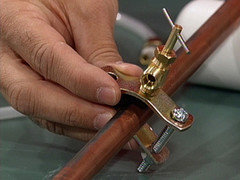
Instead, there should be a hard copper T junction which is sweated (soldered) on the supply line. Which is then mated to the 1/4" pex or soft copper with a reducer. I like to use a compression fit reducer stop valve which is sweated on the 1/2" side and compression fit on the 1/4" side. That way, any damage to the soft copper or pex can be easily fixed by shutting the valve at this junction and replacing the run. The other end is of course terminated with another valve (as mentioned above) right behind the fridge to provide a shutoff in case there is a leak in the tube behind the fridge or in the fridge. This will last you as long as your copper pipes whereas saddle taps have a typical life span of under 5 years. Less if the tap is in an area that can go through wide swings of temps (like in a basement). It's not uncommon for these taps to start to drip after only a year or so.
davidro1
13 years agolast modified: 9 years agoDitto what amcook said.
The join (or connect) to the main line was not the main question, so I left that out.
So, theresse, you may want to go take a look at the hard Tee connection point inside the sink cabinet.
A saddle valve (which goes by many names) would be the least advisable type, as it may drip water slowly (which makes a swamp out of your cabinet).theresse
Original Author13 years agolast modified: 9 years agoAs you can see, I've been way behind in my responses!
Thanks so much everyone for taking the time to help w/ this matter!
My contractor says the Wirsbo (or whatever it's called now - hopefully it's not an old stash - ha) is good and he swears doesn't change the taste of the water. Other friends have said that's what most plumbers use now, yada yada. I haven't used the water out of the fridge yet (taken the time to read the fridge's manual and figure out how to get the water and ice and filter going properly, filling up a few gallons of water to flush it out, etc.) but the moment I catch up, I will. Meanwhile, I'm going to cross my fingers and hope this will be good enough. If it's not, well, I'll deal w/ that at the time. If the water tastes funny I'll give that *some* time but I'm not willing to waste several weeks on funny-tasting water so hopefully all will be well.
creek side - thanks for sharing your experience w/ Pex. Does it matter that it's not just the fridge line but also w/ the new sink faucet? Hopefully not. He ran it along the unfinished basement ceiling and then it comes up underneath the sink cabinet where he put a shutoff valve. There's no risk of UV light cause even in the basement - as far as I recall - there are only North windows that are darkened from previous owner's covering them w/ some funky old plastic. If we ever finish the basement I may consider covering up better. Assuming the stuff makes it that long.
I agree that he was out of line and that at least my contractor should have asked me whether I had a preference. Oh well - I made my feelings known to my contractor without being unnecessarily confrontational. It's amazing how much you learn your first-time doing remodeling! :-o
antss - Thanks for the positive feedback about Pex as well as putting the shutoff under the sink.
Well, I wasn't THAT clear w/ my contractor - haha - but I surely let him know how I felt about the plumber not discussing it w/ me which hopefully by default was made clear that my CONTRACTOR should have discussed it w/ me. I sense he won't make that mistake again since he appears pretty intelligent and since something similar has happened w/ the electrician once before! There are lots more little decisions to be made and I've been pretty clear w/ him since the Pex issue that in the future I'd like to know whenever one is about to be made. Re. the electrician, one of them decided where my backsplash outlets would go without discussing w/ me first. The electrician originally put in two sets of outlets on either side of the sink (4 in each) and I had him redo it and put in 2 sets on each side of the sink - one closer to the sink and one toward the end of the counter, w/ 2 + 2 instead of 4. I let my contractor know, then, that I found it odd that the electrician hadn't asked me how I wanted the setup to be. *Hopefully* this won't happen anymore (ugh) and hopefully I won't be charged for his having to undo that work. It makes me feel so petty and controlling to complain, even though I know in the end I have every right.
aprince - awww, cute name. ;) Yes, I keep reading that about copper. It seems people are 50/50 on the matter, really. Well, take for instance creek side's comment below yours!
davidro1 - thanks for the clarification re. Uponor vs. cheap plastic, as well as the importance of making sure it's very secure at the joint!
weedmeister - haha thanks for aiding in my confidence! :)
antss - yeah, "all can be fine if used properly and appropriately" makes perfect sense. AS LONG AS the water tastes good!
creek side - well hopefully (all I can really do is hope at this point) the stuff hasn't been exposed to the sun or you know...bright lights. Here in the NW I doubt the plumber or anyone would have stored it outside, but who knows.
davidro1 - you just reminded me that I meant to check the back of the fridge to see if he gave some extra length back there of the Pex.
amcook - I seem to recall he used a T joint but I'd better double-check. I remember it looked pretty substantial. Thanks so much for the detailed suggestions/instructions, and for the picture!
davidro1 - I'm 99% sure it's not a saddle valve. I'll go look now! Thank you...
antss
13 years agolast modified: 9 years agoif the water doesn't taste good because of the piping then the "Appropriate"`pipe wasn't used for that water.
All snarkiness aside, begs the question: "do I want to be drinking water that leaches out the pipe innards in the first place? "
mojavean
13 years agolast modified: 9 years agoPEX is my preference when it comes to appliance hookups. It handles flexion better than copper, won't just rupture out of hand if it freezes, and if it makes the water taste funny then there is nothing that can be done about it because all the plumbing on the inside of the refrigerator is made out of it, too.
Personally, I don't notice any difference in taste between PEX and Copper but I don't eat them regularly.
Antss, it doesn't "begs the question," it raises the question.
Begging the question is a fallacious debating tactic where the truth of the argument is asserted in support of itself.
Here is a link that might be useful: See William Safire
davidro1
13 years agolast modified: 9 years agotheresse, you can safely disregard all concern about taste, leaching, freezing and sunlight damage. Really.
(b.t.w. did you install a small faucet after all, in your counter?)
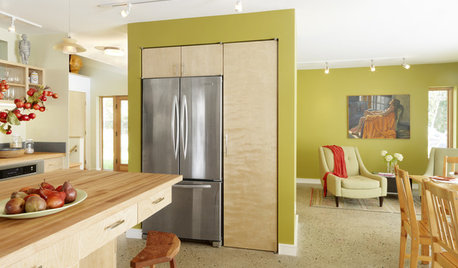
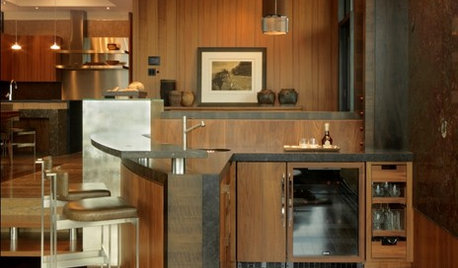
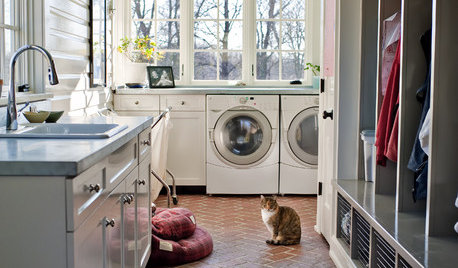
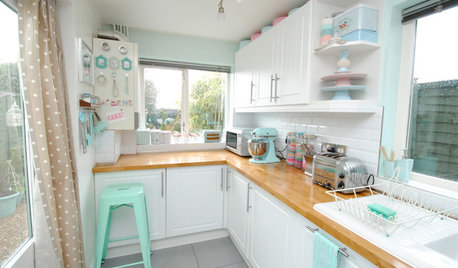
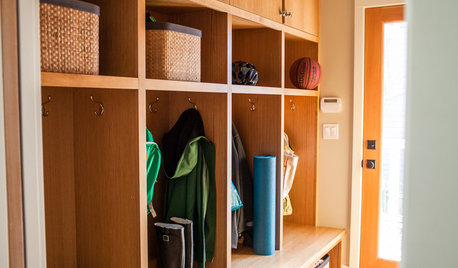

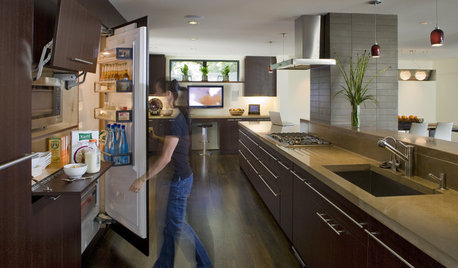
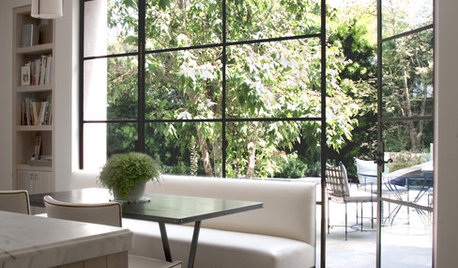
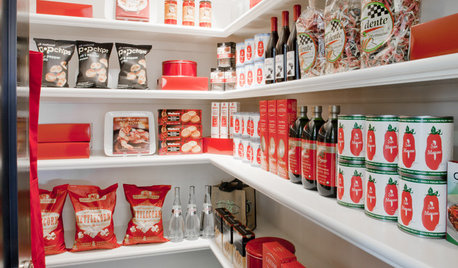
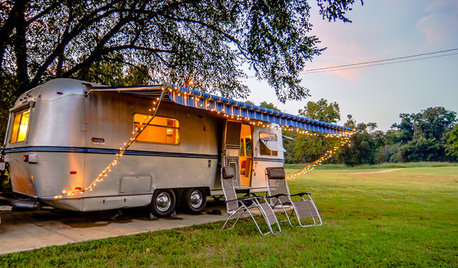




warmfridge